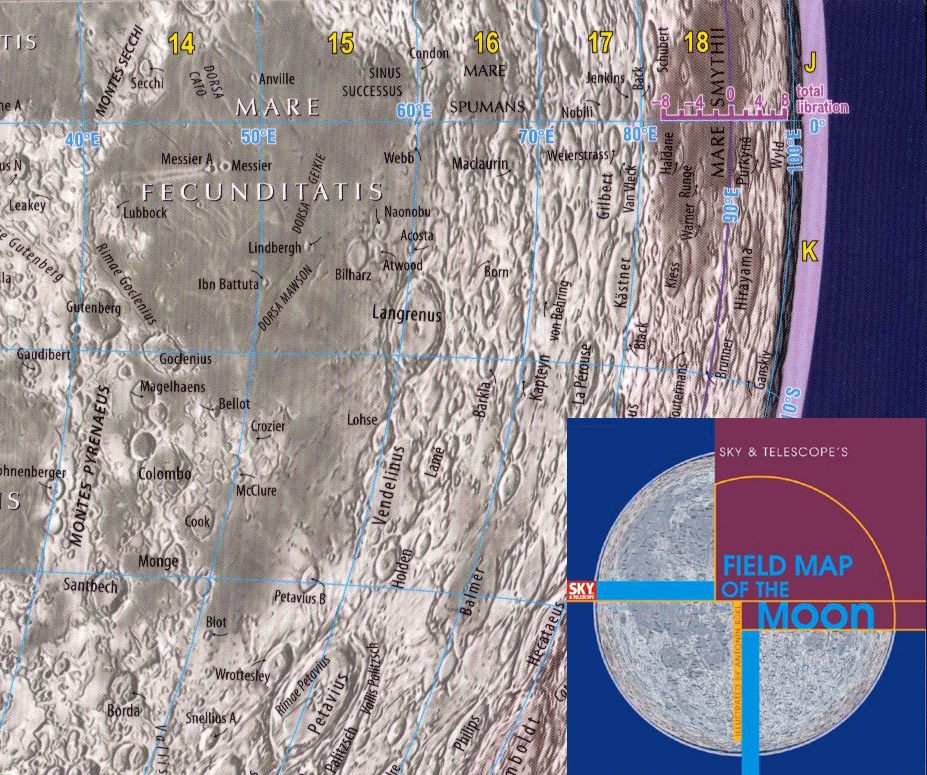
Image by Chuck Wood
I feel a little like I’m cheating on my spouse. I’ve stopped using Rükl’s Atlas of the Moon every day and have another source for quick and easy identification of lunar craters. Its Sky & Telescope’s Field Map of the Moon, a handy, laminated and foldable chart meant for use at the telescope, but also ideal for desktop work. The map is printed on four pieces of card stock, each 12″ wide and 12″ high. The lamination holds them together and allows them to be folded so any lunar quadrangle can be conveniently held and examined. This map is an excellent scale for identifying named craters, and only occasionally do I have to pull out Rükl to find lettered craters or for a larger scale. But the best feature is the depiction of the limb regions - they are shown in a brown hue and are opened up more than in a normal projection, but are not an overhead view that doesn’t match what is seen in a telescope. This is by far the best reference that exists for identifying limb features as seen from Earth. Over the last few years Sky has introduced three different Moon maps with different scales. The supreme reference is still the Atlas where, if you cut out the 72 plates and paste them on a wall, the Moon has a diameter of 1.4 m (55″). This Field Map Moon’s diameter is 56 cm (22″), and the earlier Moon Map is 28 cm (11″) in diameter. The Moon Map is too small for easy use, and it is slow looking from the number on the map to the nearby table to learn what the name of the feature is with that number. As in Goldilock’s, the one in the middle (the Field Guide) is just right. And I really don’t have to feel unfaithful about using it because it was also drawn by the master Rükl! You can buy any of these great maps from Amazon by clicking here and you will generate a tiny commision for LPOD!
Technical Details:
The two maps are available both in the now conventional N-up, E-right configuration and also as a N-up, W-right version for use with telescopes with an odd number of reflections. Rükl’s Atlas is only available in the E-right arrangement.
Related Links:
none today
Yesterday's LPOD: A Floorful of History
Tomorrow's LPOD: Anti-Sun Moon
Now you can support LPOD when you buy ANY book from Amazon thru LPOD!
Yesterday's LPOD: A Floorful of History
Tomorrow's LPOD: Anti-Sun Moon
COMMENTS?
Register, and click on the Discussion tab at the top of the page.
Contributions to http://www2.lpod.org/ are licensed under a Creative Commons Attribution No-Derivative-Works Non-Commercial 3.0 License. 



